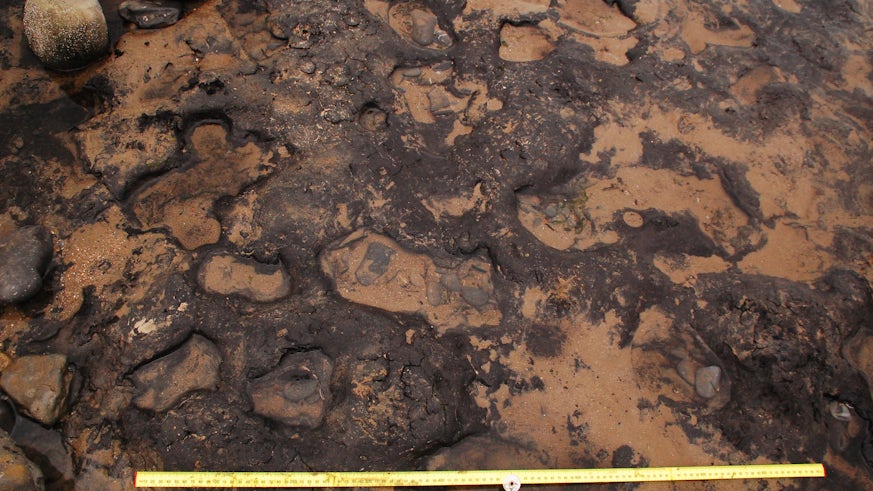Rare prehistoric footprints redefined as 7,000 years old
28 February 2017

In a massive time-shift, new analysis conducted by a Cardiff University researcher pushes our understanding of a set of rare human footprints on the Welsh coast back by 3,000 years.
Discovered in 2014, the ancient footprints of both children and adults at Port Eynon on the Gower peninsular were initially thought to date to the Bronze Age.
However, new Radiocarbon dating by Archaeology PhD student Rhiannon Philp, now places the fragile footprints still further back to the Mesolithic period, a time when humans were predominantly hunting and gathering.
‘Frozen’ footprints
Rhiannon, a student in the University’s School of History, Archaeology and Religion, said: “These ‘frozen’ footprints made in freshwater marshland give us a fleeting glance of a group of adults and children travelling together seven millennia ago.
“But the picture is even more precise. Wild animal tracks suggest deer and wild boar moving in the same direction. What we might be witnessing 7,000 years later is a snapshot moment of a Mesolithic hunting party tracking their prey through an open, boggy landscape now lost to the waves.”
Post Ice Age human footprints are rare in the UK, with only nine recorded intertidal sites, the majority of which are in Wales.
Rhiannon’s research is helping to contextualise and rebuild a landscape now lost to rising sea levels and increase understanding of the people who lived within it.
“Given the fragility of these examples and climate change now and then, it is incredibly important to obtain as much information as possible whenever the opportunity arises,” added Rhiannon.
The analysis was funded by the Cambrian Archaeological Society and the Gower Society. Further research is now underway to better understand the ancient environment and the demographics of the people whose traces are now glimpsed only at low tide.

